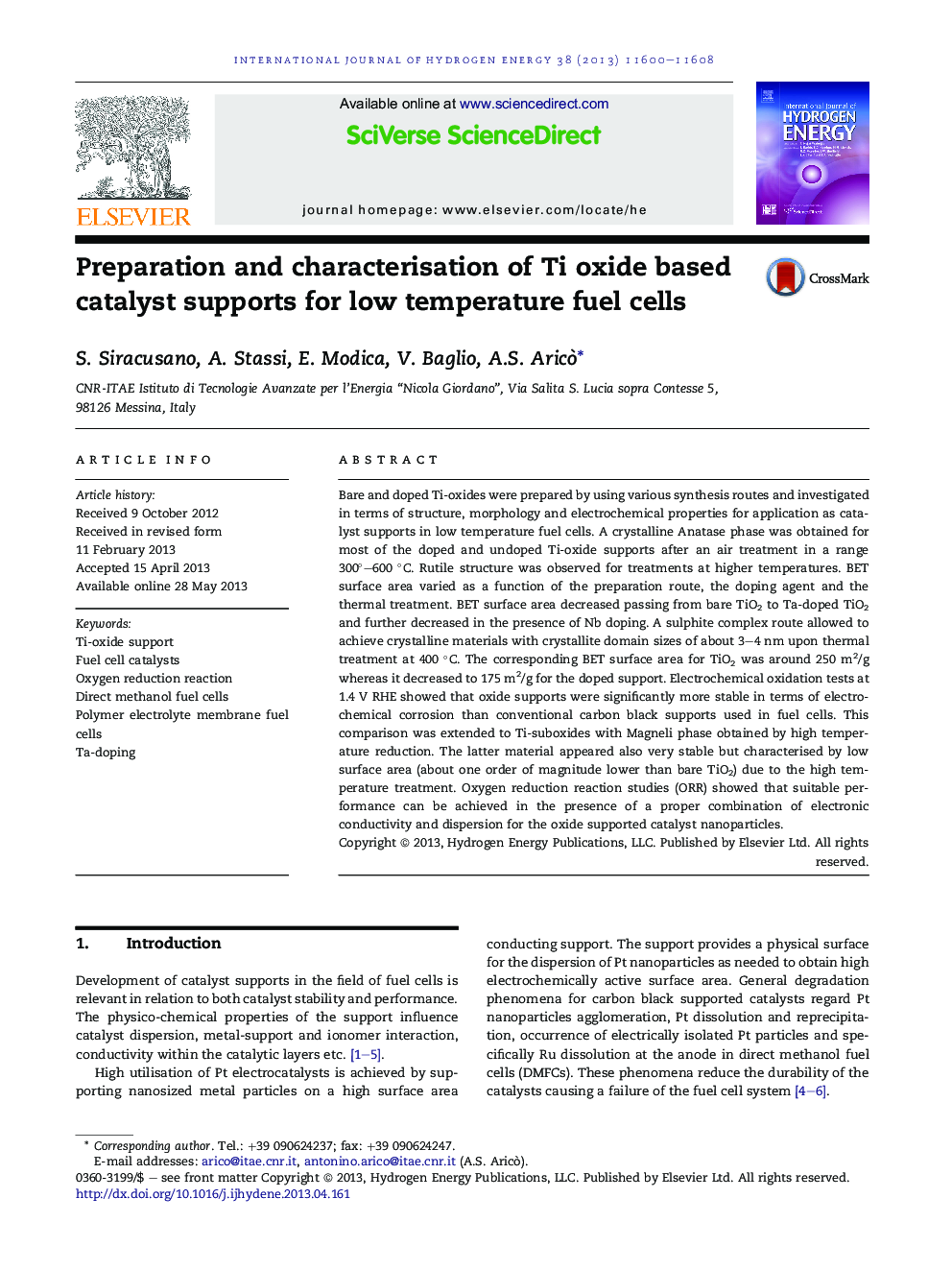| Article ID | Journal | Published Year | Pages | File Type |
|---|---|---|---|---|
| 7722078 | International Journal of Hydrogen Energy | 2013 | 9 Pages |
Abstract
Bare and doped Ti-oxides were prepared by using various synthesis routes and investigated in terms of structure, morphology and electrochemical properties for application as catalyst supports in low temperature fuel cells. A crystalline Anatase phase was obtained for most of the doped and undoped Ti-oxide supports after an air treatment in a range 300°-600 °C. Rutile structure was observed for treatments at higher temperatures. BET surface area varied as a function of the preparation route, the doping agent and the thermal treatment. BET surface area decreased passing from bare TiO2 to Ta-doped TiO2 and further decreased in the presence of Nb doping. A sulphite complex route allowed to achieve crystalline materials with crystallite domain sizes of about 3-4 nm upon thermal treatment at 400 °C. The corresponding BET surface area for TiO2 was around 250 m2/g whereas it decreased to 175 m2/g for the doped support. Electrochemical oxidation tests at 1.4 V RHE showed that oxide supports were significantly more stable in terms of electrochemical corrosion than conventional carbon black supports used in fuel cells. This comparison was extended to Ti-suboxides with Magneli phase obtained by high temperature reduction. The latter material appeared also very stable but characterised by low surface area (about one order of magnitude lower than bare TiO2) due to the high temperature treatment. Oxygen reduction reaction studies (ORR) showed that suitable performance can be achieved in the presence of a proper combination of electronic conductivity and dispersion for the oxide supported catalyst nanoparticles.
Keywords
Related Topics
Physical Sciences and Engineering
Chemistry
Electrochemistry
Authors
S. Siracusano, A. Stassi, E. Modica, V. Baglio, A.S. Aricò,
